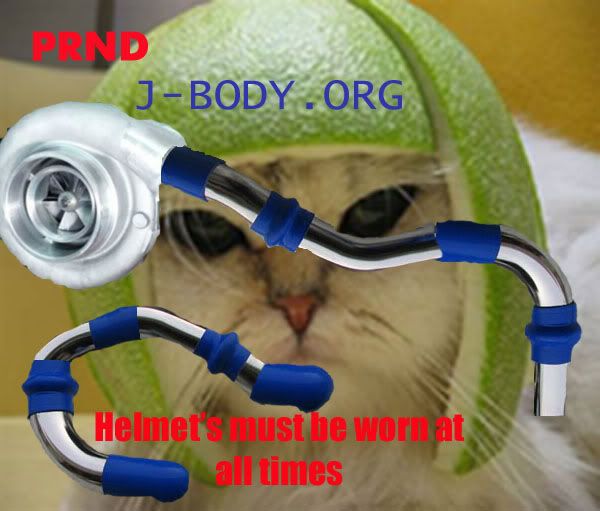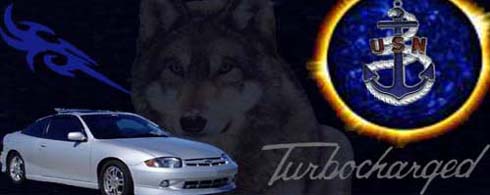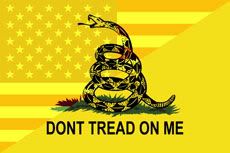All you wanted to know about the J-Body fuel system... and more
Components
To understand the fuel system, you need to understand its parts. Here is the basic fuel system:
[Fuel Tank]--[Fuel Pump]--[Feed Line]--[Fuel Rail]--[FPR]--[Return Line]--[Fuel Tank]
The fuel injectors sit under the fuel rail and go into the head. So lets go through each piece:
Fuel Tank
The fuel tank obviously holds the fuel. In our cars (and many OBD-II cars) this tank is pressurized. This is why you hear a hiss when you open the gas cap. The computer monitors the pressure in the tank, so that when it drops below a certain point for a certain period of time, the tank or evaporative system has a leak. Usually this is caused by a loose or bad gas cap, but occasionally has other causes.
The evaporative (or evap) system is interesting in itself. If you've ever spilled gas you know that it "dries" up very fast. Its not actually drying, its evaporating. The evap system uses the evaporated gas and pipes it back into the intake manifold to improve gas mileage.
Fuel Pump
The fuel pump pulls the fuel out of the fuel tank and sends it down the rest of the system. The stock pump is not designed to handle much pressure over stock, no matter what other people have gotten with it. Do NOT trust the pump over 60 psi for any length of time. You may get away with it for a month or two, but one day the pump will burn out and fail when you really don't need it to.
You can pressure test a fuel pump to see what its maximum pressure is. First you need a gauge in the fuel system somewhere on the feed line or fuel rail. Next, start your car and let it idle. Clamp a vise-grip around the return line and wait until the pressure stabilizes, then unclamp it. That is your maximum fuel pressure. Just don't leave the line clamped very long, it will burn out your pump in a hurry.
Feed Line
This is a pressure line from the fuel pump to the fuel rail. There really is nothing special about it, other than its made for fuel injected cars (carburated fuel line is different... NEVER USE IT in an fuel injected system).
Fuel Rail
The fuel rail distributes an equal amount of fuel pressure to each of the injectors that are attached to it. The stock fuel rail holds enough fuel and fuel pressure to support well over 500hp. Aftermarket rails are really nothing more than dress up items. Fuel rails aren't really any technological wonder. Its a tube with a hole on each end, and 4 holes for the injectors. One end-hole attaches to the fuel feed line, and the other end has the fuel pressure regulator on it (FPR).
Fuel Pressure Regulator
This is a wonder of science right here. Basically, its a vacuum actuated valve. The more vacuum the FPR sees, the less it opens. If you are thinking to yourself... "well that doesn't sound right... at 0 vacuum (wide open throttle) you want more fuel, so you'd want it to open more", then you are just a bit backwards. The fuel pressure regulators job is given away by its name. It DOES NOT regulate how much fuel is in the fuel rail, but how much pressure is in it.
If you want to have a real world example of how you can understand this, get a drinking straw. Put one end in your mouth and put your fingers at the end so you can pinch the end closed. Now blow into the straw, but don't pinch the end, thats how the fuel pressure regulator is when there is full vacuum. You don't need a lot of fuel pressure going into the injectors because at full vacuum, the engine's throttle plate is fully closed (you are not accelerating).
Now, blow through the straw, but pinch the end shut (or varying degree's of shut), and blow through it. That is how the FPR is at WOT, where there is no vacuum. It increases the fuel pressure so each time the injectors open, more fuel is forced through them.
A common misconception about the fuel system is that the fuel pressure is regulated by the computer. It is not. The pump is running 100% (flow wise) all the time. The FPR chooses how much of this flow to hold in the rail (and increases fuel pressure by doing so), and how much to let back into the fuel tank (reason for the return line). The fuel pressure is completely vacuum controlled.
Fuel Return Line
This brings fuel back into the fuel tank. It is important to note that the fuel return line IS NOT a pressurized line. Don't use the return line to feed your extra injector's, or whatever else needs fuel. This line simply takes fuel from the fuel pressure regulator and drops it back into the fuel tank.
Fuel Injectors
I kept this one for last because it is a huge topic. Your fuel injectors sit under the fuel rail and inject fuel at the back of one of the valves, which, when open, suck fuel into the combustion chamber.
Fuel injectors are electronically controlled valves. They operate on a square wave signal from the ECU. Basically this means that the valve opens when the signal is high, and closes when the signal is low. The length of time that the signal is high (and the valve is open) is called the pulsewidth. The pulsewidth, as a definition, is the length (in time) of the pulse that opens the injectors.
Now injectors have a duty cycle. This is the amount of time they spend open. When an injector is open, it generates heat (electricity turns to kinetic energy in the form of heat, physics stuff). The longer the valve is open, the more heat it generates, and therefore the more prone it is to failure. When an injector fails, it will either stick open, or stick closed, both are very bad. When sizing injectors, you don't want to have the injectors working with more than an 80% duty cycle under the very worst conditions, and even then, not for very long.
Fuel injectors are sized at a certain pressure, usually 45 PSI. They are then tested at that pressure and rated for a certain flow (lbs/hr or cc/min). The more fuel that the injector can let through it at one time, the bigger the injector is. You can effectively change the size of the fuel injectors by changing the fuel pressure that is going through them. Obviously if the injector is rated at 45 PSI, and you push 60 PSI through it, then you will get a higher flow rate. Many times, this is desirable since you can get a lower duty cycle on smaller injectors and increase the fuel atomization.
There is a downside to just increasing the fuel pressure though. Actually, there are 2 downsides. The first is the fuel pump. Backing up the fuel in the rail causes the pump to try to push more fuel into the line (which increases pressure), but causes the pump to heat up and eventually fail. The second downside is called clipping. Clipping occurs when you try to push too much fuel pressure into the injector. The high fuel pressure can actually hold the injector closed, causing it to clip, or miss that pulse. When this happens often enough, it causes misfires and possibly engine damage.
Fuel system modifications
In the turbocharged kingdom, fuel is the king, queen, and town drunk. Most people will buy a fuel management unit (FMU), that goes in the fuel system and increases fuel pressure in a ratio with the amount of boost. Here is how an FMU goes in:
...--[Fuel Rail]--[FPR]--[FMU]--[Return Line]--...
Yes, the FMU goes after the FPR. (Ironically, in some fuel systems, the FMU completely replaces the FPR, this happens in the Hahn turbo kits for the Eco, but only because the FMU they picked also has a boost onset pressure, which regulates the pressure when you are not in boost as well). The FMU takes over after the FPR is fully open (in boost, you are making positive pressure, the FPR is maxed out at 0 PSI), and increases fuel beyond that, usually in a ratio with boost.
Now people who buy fixed rate FMU's are usually just buying the maximum ratio FMU they can buy, which really isn't all that smart. Buying a 12:1 FMU increases fuel pressure 12 PSI for every 1 PSI of boost, and it does this OVER stock pressure. So lets say your FPR at 0 PSI is putting out 55 PSI of fuel pressure, but you are boosting at 10 PSI with a 12:1 FMU... You are adding 120 PSI to your fuel system! This is WAY over the amount of pressure the pump is capable of supplying, and is WAY too much fuel for the injectors.
The best thing to do is to buy an adjustable FMU. These can adjust the rate, usually from 1:1 through 12:1 so you can pick and choose what the best ratio is for you.
Electronic Mods
These types of mods are done by many, ranging from the SAFC to the Megasquirt and many others. I will go over a bit how these things work, and what the different types are:
SAFC:
The SAFC is a popular choice due to how cheap it is, and how easy it is to hook up. The SAFC works by modifying the signal from the MAP sensor to make the computer think the air pressure is different than it actually is. The biggest problem with the SAFC is that when the MAP sensor is maxed out in voltage (5 volts), the SAFC can't really add any more fuel (computer doesn't know how to interpret any additional voltage). The SAFC should be used only to fine tune a fuel curve.
Megasquirt, E-Manage:
These are a bit less popular due to the complexity and cost, but they are the best choices for electronic fuel management. They work by altering the pulsewidth of the injectors that the computer sends out, adding or subtracting fuel based on many variables (called Maps). These maps are grid-like sheets that have 2 variables, and you enter a value in the graph. The variables are the X and Y axis of the sheet, and the values are in the middle.
Final notes
The biggest thing to remember about electronic mods, or the fuel system in general, is that it is not electronically controlled. The SAFC does not increase fuel pressure, and niether does the Megasquirt or the E-Manage.
There may be things I missed, but thats about it, feel free to add.
-Shifted
 4cyltuner.com
4cyltuner.com - Information Source For 4 Cylinder Tuners
Buy stuff from CarCustoms Ebay! Won't be disappointed!













